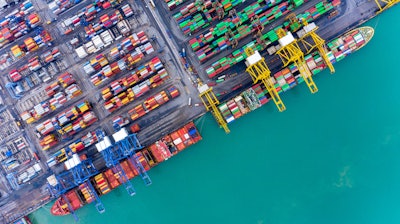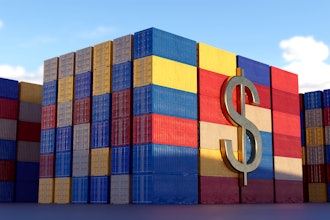
Everybody wants to know what the “new normal” for supply chains is.
The global pandemic, along with adverse weather, natural disasters, infrastructure challenges, and financial disruptions, has led to shipping delays, supply constraints, labor shortages, and rising costs.
We are all familiar with the headlines:
- The World Economy’s Supply Chain Problem Keeps Getting Worse.
- The World Is Still Short of Everything. Get Used to It.
- Christmas Tree Sellers Hit by Supply-Chain Disruptions.
The reality is, there is no end in sight to the disruption. We don’t know when some of the tensions making headlines will subside. So, it’s critical that we make adjustments to minimize disruptions for our clients.
RELATED: Fastenal Addresses “Crushingly Bad” Supply Chain Challenges (published Oct. 18)
How to Adapt
One key to remaining financially stable while serving customers is to establish strategic alliances.
These strategic alliances with providers and service companies help mitigate the risk that your supply chain gets interrupted. They can include logistical expertise, as well as asset-based entities to facilitate operations and ensure that space is available to alleviate short-term or long-term disruptions to the supply chain.
The truly forward-thinking providers are looking to see where there are opportunities based upon the specific challenges they face.
There is a high entry point for investing in capital infrastructure to support the supply chain. Preparing for supply-chain shocks is part of long-term planning, and strategic alliances allow you to flex up or flex down.
It’s All About Trust
With strong strategic alliances in place, your customers will be reassured that, no matter what happens, their raw materials or finished products will be prioritized and safely moved from Point A to Point B.
It’s worth noting that addressing unpredictability is not one-size-fits-all.
The unpredictability impacts every aspect of the supply chain from shipping to warehousing. Across every mode of transportation, everybody is looking at a variety of ways to have alliances. Organizations are thinking outside the box.
Challenges to the supply chain aren’t going away anytime soon, so these alliances should be strong and lasting.
Accepting the current reality is something we have to adjust to. The supply-chain headaches won’t last forever. Eventually, there will be a return to inventories being built, delivery expectations being met and costs coming down. But it’s way too early to predict when we should be seeing some consistency.
Acceleration to Change
There are other positive developments taking place such as the digitization of the supply chain for real-time information, Internet of Things, and automation across operations for improved end-to-end visibility across the supply chain.
 Kirchner
Kirchner
Until there are answers on employment, production material, consumer demands and Covid-19, it is going to be difficult to determine supply chain needs.
In an inconsistent environment that is fast-paced and unpredictable, strategic alliances are critical.
Andy Kirchner is the Owner and CEO of NOTS Logistics, a customized supply chain solution company with over 4 million square feet of warehouse space and a service area covering the U.S.






















